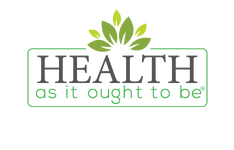
A Little-Known Benefit Associated With This Kind of Exercise
If you know us well enough here at Health As It Ought To Be, you know we’re going to advise you to exercise regularly.
The reasons are simple. Exercise combined with a healthy diet is one of the best ways to revamp your health.
Numerous studies have shown exercise is helpful in:
- Regulating metabolic rate
- Helping to restore natural hormonal levels
- Increasing Vo2 max
- Working to optimize cardiovascular health
- Normalizing neurochemistry
And much more.
Truthfully, one of the more exciting benefits produced by exercise is its ability to help strengthen bones.
And, since a large number Americans' bones weaken with age, I wanted to show you just how a certain kind (or type) of exercise can help decrease your risk of fracture and increase the overall strength and density of your bones.
The Incredible Way Load-Bearing Exercising Increases Bone Strength
First off, not all exercise helps boost bone strength.
I wish that were the case, sadly it’s not.
You’ll find there’s rarely a “one-size-fits-all" prescription for total heath.
The kind of exercise positively affecting bone health is known as load-bearing exercise.
Load-bearing exercise is any kind of exercise that “overloads” your bone. Yes, carrying around a hiking backpack would count. Load bearing simply means your movement + gravity exerts a stress on your bone not provided by a normal movement of the body. And, no, sitting with a hiking backpack doesn’t count.
Dr. Len Kravitz (not the musician from the 90’s) says, “In order to stimulate BMD (bone mineral density) gains in a particular bone, an exercise must overload that bone. This load imposed on a bone during exercise must be substantially greater than that experienced during normal activities of daily living. In other words, there is a certain threshold of loading which needs to be reached in order to produce a bone mass gain. However, much research is needed to more completely identify the recommended intensities for optimal bone adaptation.”
As he mentioned, the optimal adaptation still needs to be worked out by researchers, but the conclusion remains.
To build bone you need to exercise and produce some kind of stress by means of a load on the bone.
Think of exercises like:
- Weight lifting
- Jogging
- Tennis
- Walking (with weights)
- Skiing
Exercises that wouldn’t help include:
- Cycling
- Swimming
- Elliptical training
- Pilates
This isn’t to say these exercises are “bad.”
Participating in those kinds of exercise can definitely help with cardiovascular health and they can definitely make your muscles stronger, they just won’t help with bone health. Don’t go telling people Dr. Wiggy said cycling is bad. You’re just not going to hear me recommending it as a means to greater bone density is all.
Dr. Kravitz writes:
“Numerous studies have demonstrated that adults who exercise have greater bone mass than those who are less active. The degree of increase in bone density depends on the mode and intensity of exercise, the number of years training, and the age at which training began. Interestingly, higher BMD in athletes has been found at the body sites loaded during their respective sports, validating the principle of specificity elaborated above. As well, certain activities may not apply a sufficient enough overload to cause an increase in bone mass.
Athletes who perform moderate to high-intensity impact activities, such as in gymnastics, power lifting, and jumping activities, have been found to have greater BMD than those performing non-impact or low-intensity activities, such as swimming and cycling. Some elite swimmers have even been found to have a lower BMD than non-exercisers, apparently due to unloading of their bones, which takes place during extending periods of time in a buoyant environment. It is especially beneficial for adults with low initial BMD values to begin exercise programs that enhance BMD, as these are the individuals who will see the most impressive gains.”
What this means for you is, if you know you want to prevent weak bones, you might want to include a load-bearing exercise program in your weekly exercise schedule.
So, yes, I suggest weight lifting, hiking, jumping jacks, etc.
If you’re not already working out, I suggest meeting with a personal trainer or a physician and having them help you develop a workout program which includes some load-bearing exercises.
I’m not at all suggesting you try and lift a metric ton every time you work out.
Just make sure to give your body an opportunity to resist weight, or to experience a greater stress, and yes, that’s more than just standing around holding 10 pounds of donuts and calling it exercise.
As you might know, one of the other ways to help increase bone strength is through supplementation with Vitamin K-2.
Vitamin K-2 is a key ingredient in the development of healthy bones.
Because of the new, American (or Western diet) most Americans are actually deficient in vitamin K-2. It’s part of the reason we see such high rates of fractures here in the U.S.
When you supplement with vitamin K-2, it helps to pull calcium out of the bloodstream (where it doesn’t belong) and moves it back your bones.
Vitamin K-2 is one of the most overlooked factors for bone health in the world, and when you begin taking it along with a daily vitamin D-3 supplement, it can help build stronger bones with ease.
Now get out there and grow stronger bones!
Talk soon,
Dr. Wiggy
www.HealthAsItOughtToBe.com



